Differences in RNA polymerase II complexes and their interactions with surrounding chromatin on human and cytomegalovirus genomes
- PMID: 35422111
- PMCID: PMC9010409
- DOI: 10.1038/s41467-022-29739-x
Differences in RNA polymerase II complexes and their interactions with surrounding chromatin on human and cytomegalovirus genomes
Abstract
Interactions of the RNA polymerase II (Pol II) preinitiation complex (PIC) and paused early elongation complexes with the first downstream (+1) nucleosome are thought to be functionally important. However, current methods are limited for investigating these relationships, both for cellular chromatin and the human cytomegalovirus (HCMV) genome. Digestion with human DNA fragmentation factor (DFF) before immunoprecipitation (DFF-ChIP) precisely revealed both similarities and major differences in PICs driven by TBP on the host genome in comparison with PICs driven by TBP or the viral-specific, late initiation factor UL87 on the viral genome. Host PICs and paused Pol II complexes are frequently found in contact with the +1 nucleosome and paused Pol II can also be found in a complex involved in the initial invasion of the +1 nucleosome. In contrast, viral transcription complexes have very limited nucleosomal interactions, reflecting a relative lack of chromatinization of transcriptionally active regions of HCMV genomes.
© 2022. The Author(s).
Conflict of interest statement
The authors declare no competing interests.
Figures
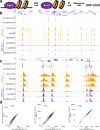
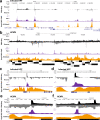
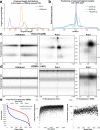
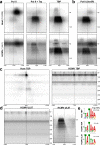
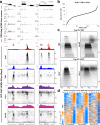

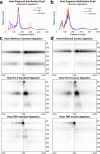
Similar articles
-
Human Cytomegalovirus IE2 Both Activates and Represses Initiation and Modulates Elongation in a Context-Dependent Manner.mBio. 2022 Jun 28;13(3):e0033722. doi: 10.1128/mbio.00337-22. Epub 2022 May 17. mBio. 2022. PMID: 35579393 Free PMC article.
-
Nucleotide Resolution Comparison of Transcription of Human Cytomegalovirus and Host Genomes Reveals Universal Use of RNA Polymerase II Elongation Control Driven by Dissimilar Core Promoter Elements.mBio. 2019 Feb 12;10(1):e02047-18. doi: 10.1128/mBio.02047-18. mBio. 2019. PMID: 30755505 Free PMC article.
-
Human Cytomegalovirus Infection Elicits Global Changes in Host Transcription by RNA Polymerases I, II, and III.Viruses. 2022 Apr 9;14(4):779. doi: 10.3390/v14040779. Viruses. 2022. PMID: 35458509 Free PMC article.
-
Interplay between the transcription preinitiation complex and the +1 nucleosome.Trends Biochem Sci. 2024 Feb;49(2):145-155. doi: 10.1016/j.tibs.2023.12.001. Epub 2024 Jan 13. Trends Biochem Sci. 2024. PMID: 38218671 Review.
-
[Molecular mechanisms of transcription through a nuclesome by RNA polymerase II].Mol Biol (Mosk). 2013 Sep-Oct;47(5):754-66. Mol Biol (Mosk). 2013. PMID: 25509347 Review. Russian.
Cited by
-
Better late than never: A unique strategy for late gene transcription in the beta- and gammaherpesviruses.Semin Cell Dev Biol. 2023 Sep 15;146:57-69. doi: 10.1016/j.semcdb.2022.12.001. Epub 2022 Dec 17. Semin Cell Dev Biol. 2023. PMID: 36535877 Free PMC article. Review.
-
Human Cytomegalovirus IE2 Both Activates and Represses Initiation and Modulates Elongation in a Context-Dependent Manner.mBio. 2022 Jun 28;13(3):e0033722. doi: 10.1128/mbio.00337-22. Epub 2022 May 17. mBio. 2022. PMID: 35579393 Free PMC article.
-
The viral packaging motor potentiates Kaposi's sarcoma-associated herpesvirus gene expression late in infection.PLoS Pathog. 2023 Apr 17;19(4):e1011163. doi: 10.1371/journal.ppat.1011163. eCollection 2023 Apr. PLoS Pathog. 2023. PMID: 37068108 Free PMC article.
-
The Triterpenoid MOMORDIN-Ic Inhibits HCMV by Preventing the Initiation of Gene Expression in Eukaryotic Cells.Pathogens. 2024 Jun 28;13(7):546. doi: 10.3390/pathogens13070546. Pathogens. 2024. PMID: 39057773 Free PMC article.
-
The human cytomegalovirus decathlon: Ten critical replication events provide opportunities for restriction.Front Cell Dev Biol. 2022 Nov 25;10:1053139. doi: 10.3389/fcell.2022.1053139. eCollection 2022. Front Cell Dev Biol. 2022. PMID: 36506089 Free PMC article. Review.
References
Publication types
MeSH terms
Substances
Grants and funding
LinkOut - more resources
Full Text Sources

